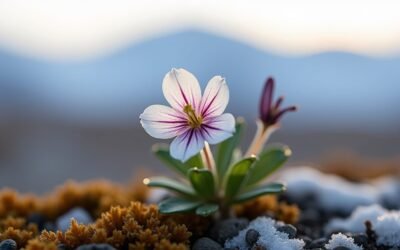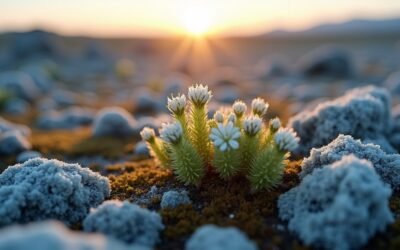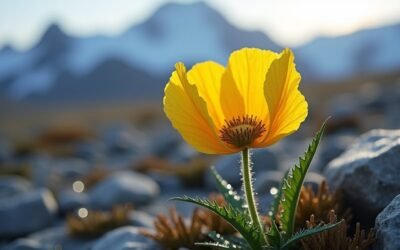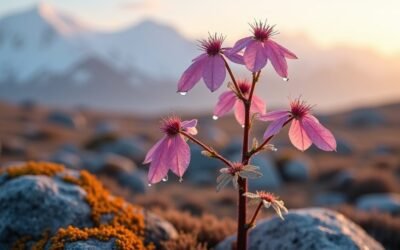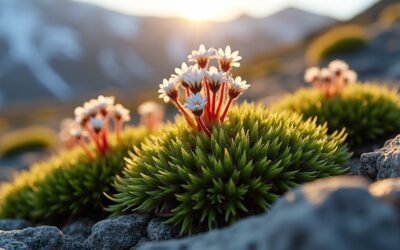Welcome to Arctic Wildlife Knowledge
Discover the wonders of the North: Your complete guide to Arctic life – uncovering the secrets of wildlife, vegetation, and climate in Earth’s frozen frontier
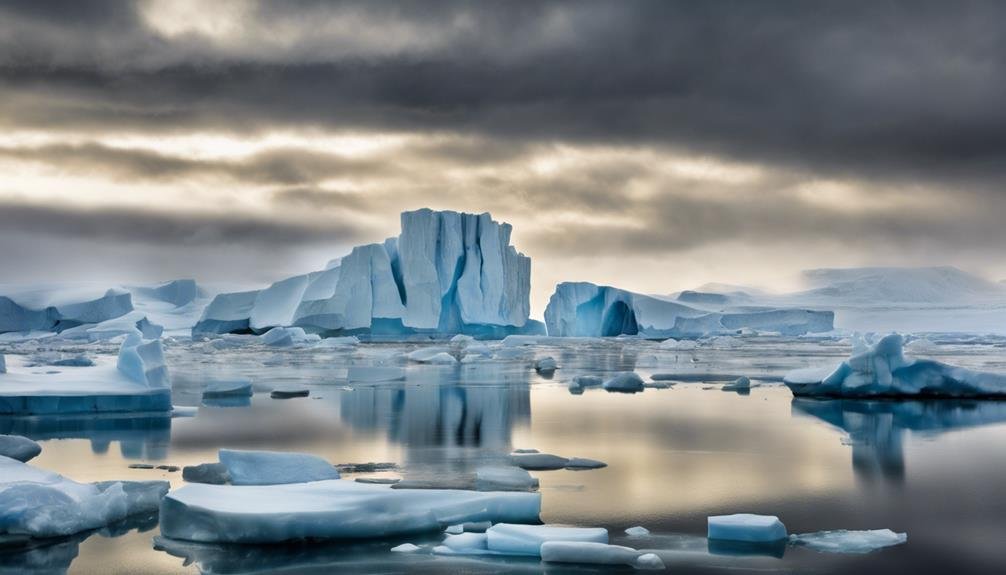
DID YOU KNOW?
The Arctic Region harbours over 21,000 identified species, including mammals, birds, fish, invertebrates, plants, fungi, and microorganisms, all adapted to thrive in extremely cold environments.
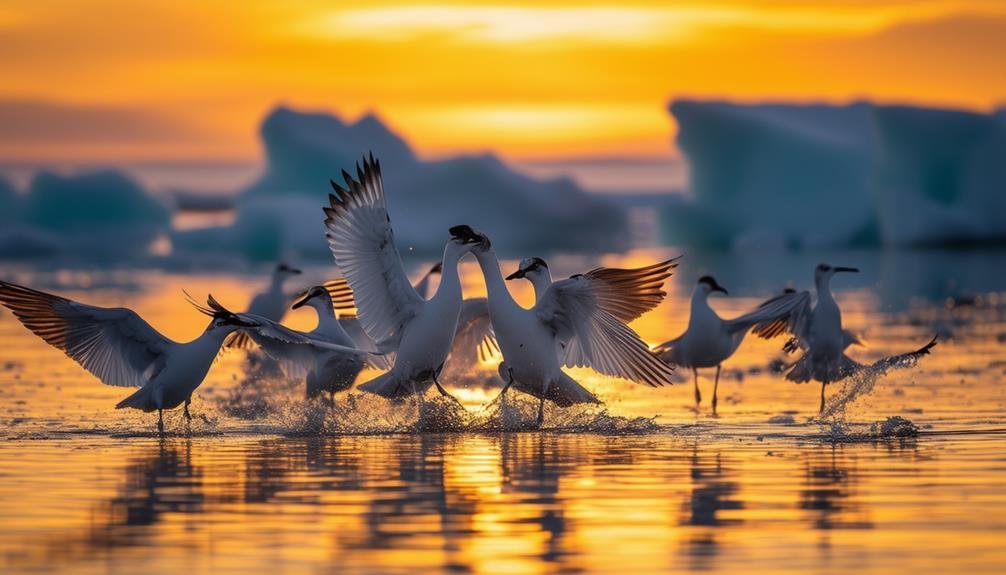
DID YOU KNOW?
The Arctic Ocean is the smallest and shallowest of the world’s five major oceans. It spans an area of approximately 14,060,000 km2 (5,430,000 sq mi)

DID YOU KNOW?
The Arctic is home to the Northern Lights, also known as the Aurora Borealis. This natural light display is a mesmerizing phenomenon caused by the interaction between charged particles from the Sun and the Earth’s magnetic field and atmosphere.

Learn With Us
Here at Arctic Wildlife Knowledge, we’ve created what one might call a digital sanctuary of understanding. A place where the mysteries of the North unfold before your eyes. Whether you’re curious about the remarkable hunting strategies of the Snowy Owl, the delicate beauty of Arctic Cotton Grass dancing in the midnight sun, or indeed the complex relationships between climate, ice formation, and the survival of species – you’ll find it all here, meticulously documented and lovingly shared.
Our experiences – tracking polar bears across the sea ice, observing the spectacular Aurora Borealis paint the sky, and documenting the brief but explosive abundance of Arctic summer life – have given us a profound understanding of this remarkable ecosystem. We’ve collaborated with indigenous communities, worked alongside leading scientists, and witnessed first-hand the dramatic changes occurring in this sensitive region of our world.
Latest News From The Blog
Don’t Miss A Thing
Humpback Whale Migration Routes in the Arctic
Known for their epic Arctic journeys, humpback whales navigate ancient routes spanning thousands of miles, but their remarkable navigation remains mysterious.
Why Are Polar Bears Endangered Today?
Unrelenting climate change threatens polar bears’ survival as Arctic ice vanishes, but their story goes deeper than melting habitats.
Snow Fleabane (Erigeron Uniflorus)
Conquering extreme alpine heights, the Snow Fleabane reveals remarkable adaptations that allow it to thrive where most plants can’t survive.
Polar Eyebright (Euphrasia Frigida)
While this tiny Arctic flower survives bone-chilling temperatures of -40°C, its remarkable adaptation strategies will leave you amazed.
Snow Buttercup (Ranunculus Nivalis)
Clinging to life in Arctic snowfields, these remarkable yellow flowers reveal nature’s secrets for surviving Earth’s most brutal environments.
Arctic Poppy (Papaver Radicatum)
Discover how the Arctic poppy thrives in polar extremes with ingenious adaptations that defy nature’s harshest conditions.
Woolly Lousewort (Pedicularis Lanata)
In the Arctic’s harshest conditions, this fuzzy pink-flowering plant survives by secretly stealing nutrients from its unsuspecting neighbors.
Yellow Whitlowgrass (Draba Incana)
Hardy Yellow Whitlowgrass defies extreme alpine conditions with remarkable adaptations, but its greatest survival secret lies deep within its cells.
Yellow Arctic Poppy (Papaver Lapponicum)
With its sun-tracking yellow blooms and ability to thrive at -40°C, the Arctic Poppy defies nature’s harshest conditions.
Woolly Lousewort (Pedicularis Lanata)
Surviving in harsh Arctic climates, Woolly Lousewort employs fascinating adaptations that allow it to thrive where other plants cannot.
Willow Herb (Epilobium)
Pioneer fireweed’s remarkable ability to thrive after forest fires reveals just a glimpse of this mysterious plant’s extraordinary survival secrets.
Tufted Saxifrage (Saxifraga Caespitosa)
Pioneering the harshest mountain terrains, Tufted Saxifrage defies nature with its remarkable ability to split rocks and survive extreme Arctic conditions.
FAQ
Frequently Asked Questions
What makes Arctic Wildlife Knowledge different from other wildlife websites?
Our website combines first-hand experience, scientific accuracy, and comprehensive coverage of the entire Arctic ecosystem – from wildlife and plants to climate patterns – all in one accessible location.
How current is your information?
We regularly update our content to reflect our latest findings, environmental changes, and our ongoing expeditions to the Arctic region.
Who creates your content?
Our team consists of experienced Arctic explorers who have spent decades studying and documenting Arctic ecosystems.
Can I use your information for educational purposes?
Yes! We encourage educational use of our materials, with proper attribution.
Do you provide information about visiting the Arctic?
We offer comprehensive guides about responsible wildlife viewing, best seasons for observation, and important safety considerations.
How do you gather your information?
Through regular Arctic expeditions and continuous field observations throughout the year.
Do you cover conservation issues?
Absolutely. We provide up-to-date information about conservation challenges, climate change impacts, and ways to support Arctic preservation efforts.
How do you ensure accuracy?
Our content is based on careful research and our own documented observations in the field.
What regions do you cover?
We cover the entire Arctic circle, including Svalbard, Northern Canada, Greenland, Alaska, and the Russian Arctic regions.
How often do you add new content?
We publish new articles weekly, with major updates to existing content monthly.
What kind of wildlife do you feature?
We cover all Arctic species from the largest mammals like polar bears to the smallest plants and insects, providing comprehensive information about their behaviors, habitats, and survival strategies.
What makes your content reliable?
Our information comes from direct observation and decades of combined experience studying Arctic ecosystems.



